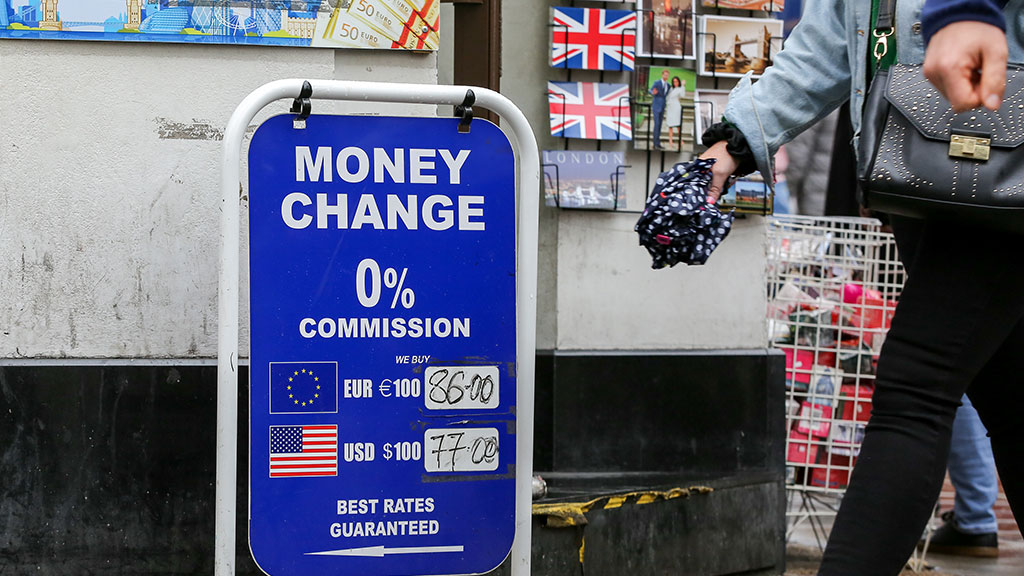Currency Corner: how high can the pound go against the euro in 2020?
In the month in which we should finally leave the European Union, Dominic Frisby takes a look at the pound vs the euro and asks just how high sterling could go.


Welcome to the first Currency Corner of the new decade. Another 500 to go before the next one. I thought today, as it’s the month in which we leave the European Union, it would be appropriate to take a look at the pound vs the euro.
Let’s start with a long-term chart which goes all the way back to the inception of the euro in 1999. When the chart is falling, so is the pound. When that chart is rising, so is the pound.

Straight away you can see this has not been a good century for sterling. Back in 2000 it took €1.72 to buy a pound. That’s the long-term high. During the financial crisis of 2008-2009, the two almost reached parity. €1.04 was the low. Today we sit at €1.17.
MoneyWeek
Subscribe to MoneyWeek today and get your first six magazine issues absolutely FREE

Sign up to Money Morning
Don't miss the latest investment and personal finances news, market analysis, plus money-saving tips with our free twice-daily newsletter
Don't miss the latest investment and personal finances news, market analysis, plus money-saving tips with our free twice-daily newsletter
This is a very difficult pair to consider without letting your political biases impinge on your thinking. If you’re pro-Brexit, then you’re probably bullish on the prospects of sterling post-departure. If you think Brexit is a form of economic suicide, then you would probably argue that the pound is headed lower.
As stores of wealth, both currencies are deeply flawed, it should be stressed. Both suffer from serial debasement: zero interest rate policies, quantitative easing and all the other shenanigans by which governments and central banks manipulate their currencies. So we are considering them on a relative basis.
It may be that, post-Brexit, Boris Johnson’s administration pursues policies to weaken the currency and boost imports. The governor of the Bank of England, Mark Carney, hinted at lower rates last week. In which case, the positive-about-Brexit, positive-about-sterling argument falls flat.
The other factor to consider is stability: currencies like political stability. Above all, the political instability that occurred after the referendum vote has been the greatest factor in sterling’s post-2016 weakness – to my mind at least.
But let’s leave all the political prognosticating aside. From a technical point of view, what I like about that long-term chart above is that there is something of a W forming – a multi-year double bottom. We just have the right hand side of the pattern to complete. And that would take us back to the €1.40-€1.50 level, should the pattern complete.
You could just as easily argue that there is a multi-year “head-and-shoulders” pattern forming that will take sterling below parity. Unlikely, I would have thought – but that is the slightly arbitrary nature of chart patterns. They can be whatever the beholder wants them to be.
Zooming into a three-year chart now, we can see that the pair have been stuck in a clear range – €1.20 on the upside and €1.07 on the downside. Since August, a clear uptrend has been in place. The red line is the 55-day moving average and it is clearly sloping up. Up is the current direction of travel.

Based on the current upward price action, therefore, I would argue that there is a reasonable probability that over the next few years, that long-term W pattern can complete, and sterling can get to the €1.45 area. There’s a long way to go before that can happen, however, and the first line of resistance is that three-year barrier around €1.20.
If sterling can get above that, the next leg should take it above €1.25 before the next significant line of resistance comes into play.
Sterling remains a long-term buy in my mind. We have a government with a strong majority and a clear mandate that looks set for probably the next decade, unless the opposition clears its act up and makes itself more electorally palatable. That stability will help sterling.
I reckon we’ll be flirting with the idea of €1.30 before the end of the year.
Let’s see if I’m right!
• Dominic’s new book Daylight Robbery: How Tax Shaped Our Past And Will Change Our Future, published by Penguin Business, is available at Amazon and all good bookshops. Audiobook at Audible.co.uk. Signed copies are available at dominicfrisby.com.
Get the latest financial news, insights and expert analysis from our award-winning MoneyWeek team, to help you understand what really matters when it comes to your finances.
Dominic Frisby (“mercurially witty” – the Spectator) is as far as we know the world’s only financial writer and comedian. He is the author of the popular newsletter the Flying Frisby and is MoneyWeek’s main commentator on gold, commodities, currencies and cryptocurrencies. He has also taken several of his shows to the Edinburgh Festival Fringe.
His books are Daylight Robbery - How Tax Changed our Past and Will Shape our Future; Bitcoin: the Future of Money? and Life After the State - Why We Don't Need Government.
Dominic was educated at St Paul's School, Manchester University and the Webber-Douglas Academy Of Dramatic Art.
You can follow him on X @dominicfrisby
-
 Taxpayers urged to fight automated HMRC penalties as 20,000 win on appeal
Taxpayers urged to fight automated HMRC penalties as 20,000 win on appealHMRC loses more than 60% of cases when taxpayers appeal an automated penalty it has imposed, new figures show.
-
 More than five million taxpayers overpay with wrong tax codes – how to check yours is right
More than five million taxpayers overpay with wrong tax codes – how to check yours is rightHMRC overcharged taxpayers £3.5 billion in income tax the latest data shows, with tax coding errors largely to blame. Accountants say it is “essential” people check their tax codes to avoid being hit with higher bills.
